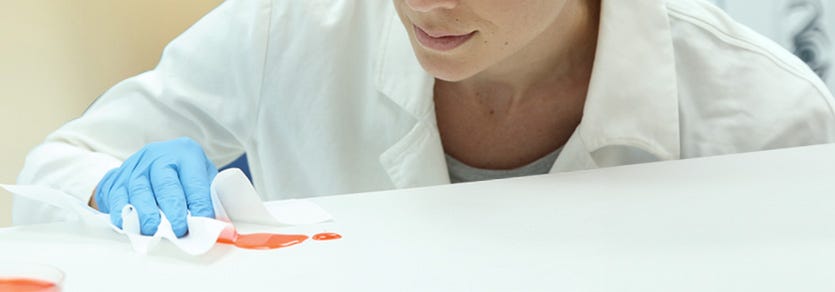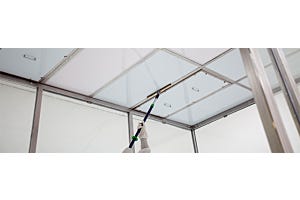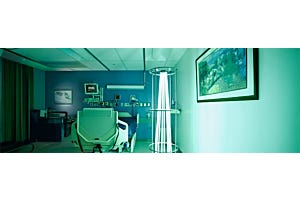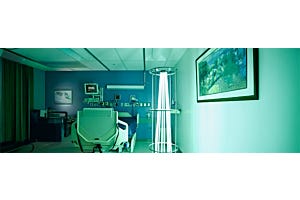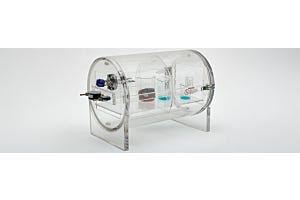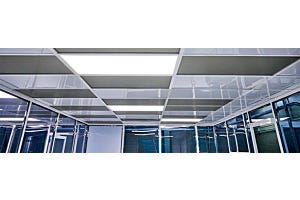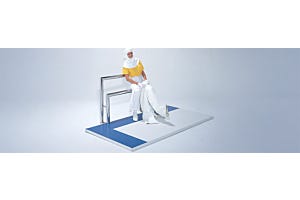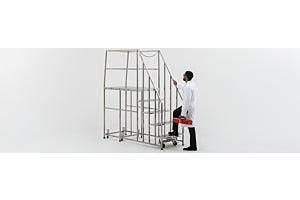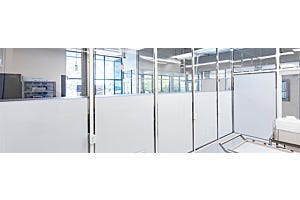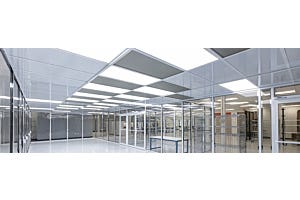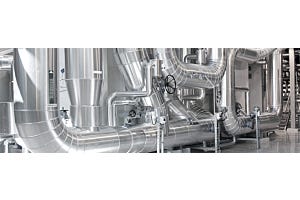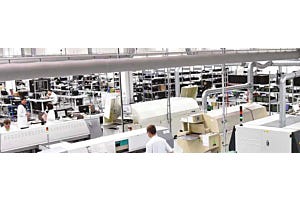Cleanrooms require distinct approaches at different decontamination stages including cleaning, sanitation, disinfection, and sterilization. Each procedure involves similar yet distinct methodologies to address specific contaminants, particles, and microbial burdens among various enclosures, surfaces, and equipment. In cleanroom environments, it is imperative that all cleaning supplies meet the cleanroom-rated standards corresponding to the ISO rating of the specific area.
- Mops
- Wipes
- Brooms
- Vacuums (HEPA filtered)
- Tacky / mats and rollers
Cleanroom Wipedown Procedures and Supplies
Cleanroom wipes are designed in several materials that vary in softness, absorbency, material construction, and knit type. Moncontinuous double-knit fabrics are a go-to choice for the cleanroom industry due to their ultra-low lint properties and favorable absorbency when wetting. Cleanroom wipe manufacturers take extraordinary measures to ensure that the final materials contain little or no manufacturing byproducts such as oils, ionic compounds, and non-viable residues (NVR). Cleanroom wipes are lot coded for each production run to ensure traceability from the factory to the end-use location
- In the cleanest environments (ISO 3 – 5 / Class 10 – 100), you should select knitted polyester wipers or spun-lace, nonwoven blends of cellulose and polyester manufactured and packaged specifically for cleanroom use.
- Less critical cleanliness classifications (ISO 6 – 8 / Class 1000 – 100,000) generally tolerate more absorbent materials made of 100% cotton twill or cellulose.
Woven wipes are created by interlacing individual threads or yarns in a specific pattern to form a fabric. Woven cleanroom wipers are typical in ISO 4 - ISO 8 cleanrooms to prevent the release of fibers or lint during the wiping process, and can be specified with different fabric weights to ensure uniform wetting and absorption across the surface area.
Non-woven wipes are manufactured in a way that bonds together one or more materials without knitting or weaving. Typical bonding methods for cleanrooms include melt-blown, spun-bonded, hydroentanglement, and wetlaid processes. Nonwoven materials include cellulose, polyester, and polypropylene, which are sometimes combined to achieve the appropriate balance of cleanliness, compatibility, wetness, and static-sensitive properties. Non-woven fabrics are advantageous for certain chemical compatibilities and may be more cost-effective in certain industries.
Cleanroom Wipedown Procedure and Steps (via Texwipe)
- Follow relevant site protocols (procedures for safety, contamination, etc.) and wear cleanroom gloves.
- Fold the wiper in mid-air into quarter folds. This will produce several clean surface areas and allow better contact with the surface to be wiped.
- When wiping, hold the wiper so that the folded edge is toward the area to be wiped. Hold the unfolded edges in your hand. Group the unfolded edges between the thumb and forefinger.
- Use either a pre-wetted wiper or a dry wiper moistened with an appropriate cleaning agent.
- Wipe in one direction, overlapping the wiped area by 10% to 25%.
- Wipe from the cleanest to least clean regions of the surface being wiped. Wipe systematically, for example, from top to bottom, far to near.
- Keep track of which surfaces have been cleaned and which wiper areas are unused.
- Always use the cleanest surfaces of the wiper. If rewiping, use a clean portion of the wiper, not the used wiper area.
- Dispose of wipers according to site procedures.
Continue to: Stainless Steel Cleaning Steps and Methods
Continue to: How to Clean a Laminar Flow Hood
Cleanroom Mops & Rollers Overview
Cleanroom Mopping: Cleanroom mops feature multi-bucket designs that separate fresh and clean water supplies. Cleanroom mop performance is determined by several factors and must meet several criteria:
- Non-shedding, non-linting
- Easy cleaning, creviceless design
- Autoclavable mop handle components
- Knitted polyesters for smooth and sensitive surfaces
- Microfiber variations increase absorbency and durability for rough surfaces
- Must meet appropriate ISO-rating for local area
Cleanroom Sticky Rollers: Sticky rollers resemble an extra-large lint roller on a stick. The rolling end features cleanroom-rated peel-off strips that can be easily refreshed and disposed of once soiled. Sticky rollers are an excellent option for removing and capturing materials on uneven or hard-to-reach surfaces such as walls, ceilings, and the sides or tops of tall equipment.
Avoid High Particulate Activities: Avoid high-particulate generating activities in the cleanroom such as aggressive scrubbing of objects or surfaces. Scrubbing involves using brushes or abrasive materials along with water and detergents to mechanically remove contaminants from surfaces. It is often employed for cleaning hard surfaces, such as floors, walls, and equipment.
Q: Can I Use Brooms in a Cleanroom?
Yes. The market does offer cleanroom-approved brooms and floor brushes. ISO-rated cleanroom brooms require 100% synthetic fibers and non-porous, non-conductive, non-shedding materials to prevent the absorption of water and bacteria. Brush designs are well-suited for handling heavy-duty grease, detergents, sanitizers, and solvents. Brooms are less in cleanrooms because they tend to disturb and further distribute particulate throughout the environment.
Need Assistance with Your Facilities Decontamination Programs?
Terra Universal offers a wide selection of in-stock cleanroom cleaning products including total environments, waste receptacles, glove/garment dispensers, garment hampers, gowning furniture, and more. Many products are stocked and ready to ship in just 1 - 3 days from Terra's California facilities.
Contact a Terra specialist via phone, email, or start a live chat with a Terra specialist.



